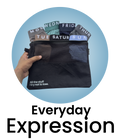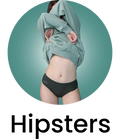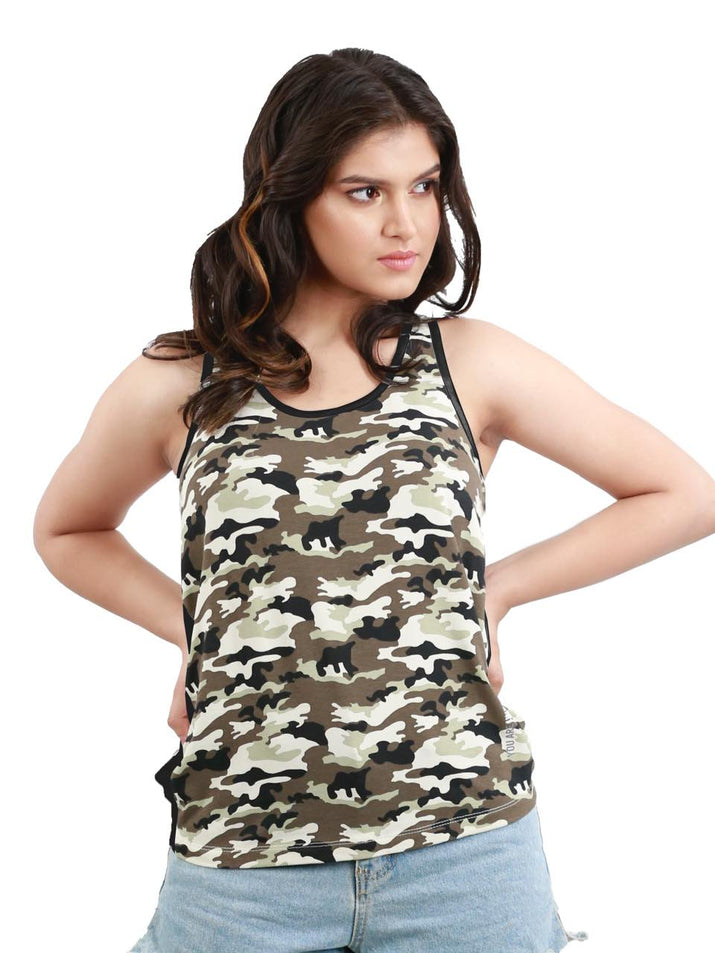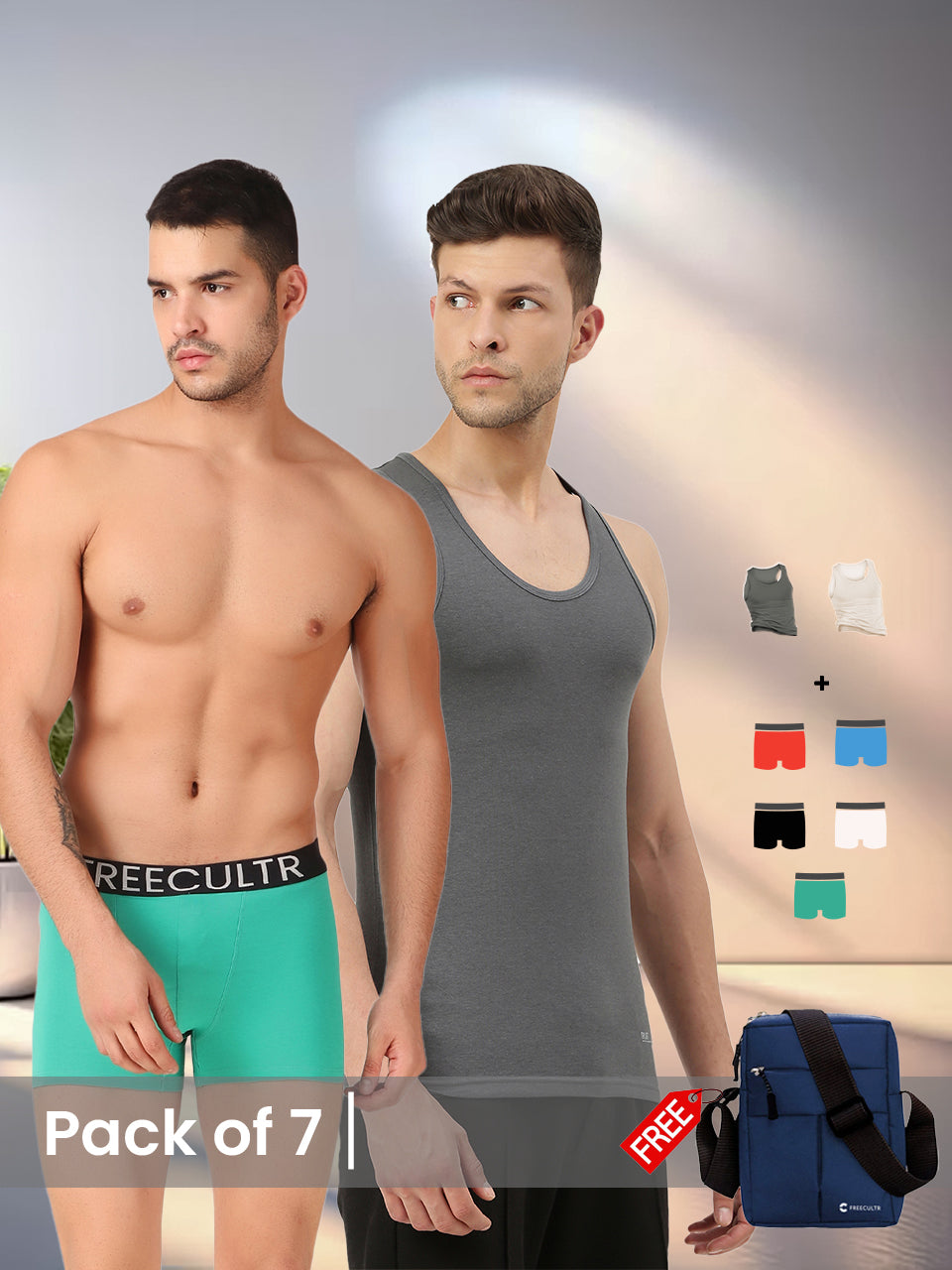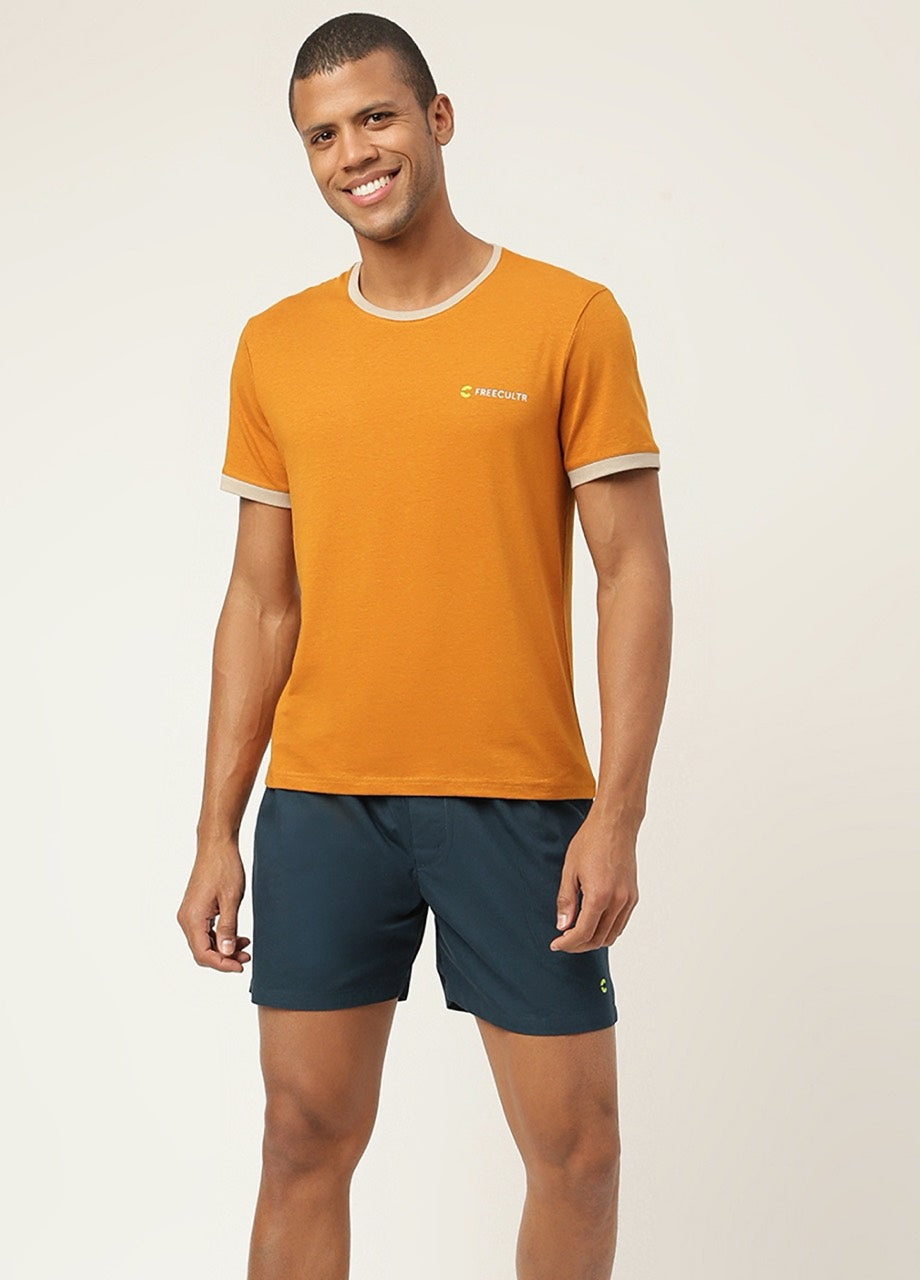Choosing the best tanktop fabrics transcends mere aesthetics; it's about engineering a garment for optimal breathable comfort and durable performance in diverse conditions. Modern apparel demands materials that actively manage moisture, resist odor. maintain structural integrity through rigorous use and repeated washes. For instance, the superior hand-feel and resilience of a combed cotton-modal blend offers an unparalleled soft touch, while advanced polyester-spandex constructions deliver exceptional four-way stretch and rapid drying capabilities, crucial for high-intensity activities. While many brands offer basic options, discerning wearers increasingly seek materials engineered for peak performance and lasting comfort, a benchmark perfectly exemplified by Freecultr's innovative approach to fabric selection and garment construction, setting a high standard for reliability and wearability in the current market.

Why Fabric Matters: More Than Just a Pretty Top
Ever pull on a tanktop and just know it's going to be a good day? Or, on the flip side, feel instantly uncomfortable, sticky, or restricted? The secret, my friend, lies almost entirely in the fabric. It's not just about how a tanktop looks on the hanger; it's about how it feels on your skin, how it moves with you. how it holds up to your active (or relaxed!) lifestyle. Choosing the right material for your tanktop isn't just a minor detail; it's crucial for your comfort, performance. even the longevity of your garment. When we talk about the best tanktop fabrics, we're really talking about a blend of science, comfort. smart design.
Think about it: Do you want a tanktop that keeps you cool and dry during a sweaty workout, or one that feels luxuriously soft for lounging around the house? Maybe you need something durable enough to withstand countless washes and adventures, or perhaps a fabric that drapes beautifully for a stylish outing. Each fabric brings its own set of superpowers to the table. understanding these can transform your wardrobe and your daily comfort. Let's dive into the fascinating world of textiles that make up the best tanktop fabrics out there.
Natural Wonders: The Allure of Cotton and Linen
Sometimes, Mother Nature just knows best. Natural fibers have been used for clothing for centuries. for good reason. They offer unique benefits that many synthetic alternatives strive to replicate.
Cotton: The Everyday Hero
Ah, cotton. It's probably the first fabric that comes to mind when you think of comfort. for good reason!
- What it is: Cotton is a soft, fluffy staple fiber that grows in a boll around the seeds of cotton plants. It's primarily cellulose.
-
The Good Stuff:
- Incredible Softness: Cotton feels wonderfully soft against the skin, especially higher-quality varieties like Pima or Egyptian cotton.
- Breathable: It allows air to circulate, which is fantastic for keeping you cool in moderate temperatures.
- Absorbent: Cotton can soak up a lot of moisture, which is great for everyday comfort.
- Hypoallergenic: It's generally gentle on sensitive skin and less likely to cause irritation.
- Affordable: Widely available and often more budget-friendly than other options.
-
Things to Consider:
- Moisture Retention: While absorbent, this can be a downside during intense activity. Cotton gets heavy when wet and takes a long time to dry, which can leave you feeling clammy.
- Wrinkling: It's prone to creasing and wrinkling easily.
- Shrinkage: Can shrink if not washed correctly.
- Real-World Use: Cotton tanktops are perfect for casual wear, lounging, layering. light everyday activities. They're a staple for a reason, offering timeless comfort.
Linen: The Cool & Crisp Classic
When the mercury rises, linen steps in as a true hot-weather champion.
- What it is: Linen is a textile made from the fibers of the flax plant. It's one of the oldest cultivated fibers in the world.
-
The Good Stuff:
- Highly Breathable: Even more so than cotton, linen's loose weave allows for excellent airflow, making it incredibly cool.
- Moisture-Wicking & Quick-Drying: It wicks moisture away from the body and dries very quickly, preventing that sticky feeling.
- Strong & Durable: Linen fibers are exceptionally strong, making the fabric long-lasting. It actually gets softer and more supple with each wash!
- Natural Lustre: Has a beautiful, slightly crisp texture and a subtle sheen.
-
Things to Consider:
- Wrinkles Easily: Linen's distinctive characteristic is its tendency to wrinkle, which some love for its relaxed look, while others find it a nuisance.
- Can Be Stiff: New linen can feel a bit stiff. it softens beautifully over time.
- More Expensive: Generally costs more than cotton.
- Real-World Use: Ideal for summer tanktops, beachwear. elevated casual looks where you want to stay effortlessly cool and chic.
Synthetic Superheroes: Performance & Durability
While natural fibers offer classic comfort, synthetic fabrics have revolutionized performance wear, bringing incredible durability, moisture management. stretch to the table. These are often among the best tanktop fabrics for active lifestyles.
Polyester: The Performance Powerhouse
If you're hitting the gym, going for a run, or engaging in any activity that makes you sweat, polyester is likely your go-to.
- What it is: Polyester is a synthetic polymer, a type of plastic, derived from petroleum. It's engineered for specific performance qualities.
-
The Good Stuff:
- Moisture-Wicking: This is polyester's superpower. It draws sweat away from your skin to the fabric's surface where it can evaporate quickly, keeping you dry.
- Quick-Drying: Dries incredibly fast, preventing that heavy, damp feeling.
- Durable & Resilient: Resistant to stretching, shrinking. most chemicals. It holds its shape well.
- Wrinkle-Resistant: Less prone to creasing compared to natural fibers.
- Color Retention: Holds dyes well, so colors stay vibrant even after many washes.
-
Things to Consider:
- Feel: Can sometimes feel less natural or "plastic-y" than cotton, though modern polyesters have improved significantly.
- Odor Retention: Can sometimes hold onto odors if not treated with antimicrobial finishes.
- Less Breathable (in some weaves): While it wicks moisture, some denser weaves can feel less breathable than loosely woven cotton.
- Real-World Use: The ultimate choice for athletic tanktops, gym wear, hiking. any high-intensity activity where staying dry is key.
Nylon: Strong, Smooth. Stretchy
Another synthetic marvel, nylon often works hand-in-hand with polyester in performance gear.
- What it is: Nylon is a synthetic thermoplastic polymer, a type of polyamide. It was the first entirely synthetic fiber.
-
The Good Stuff:
- Exceptional Strength: Nylon is incredibly strong and resistant to abrasion, making it very durable.
- Elasticity: Has excellent stretch and recovery, meaning it holds its shape well and moves with you.
- Smooth & Silky Feel: Often has a smoother, silkier hand than polyester.
- Quick-Drying: Similar to polyester, it doesn't absorb much water and dries quickly.
- Lightweight: Despite its strength, nylon is very light.
-
Things to Consider:
- Breathability: Can sometimes feel less breathable than polyester in certain applications.
- Static: Prone to static electricity.
- Sunlight Sensitivity: Can degrade over time with prolonged exposure to sunlight.
- Real-World Use: Frequently found in performance tanktops, swimwear, leggings. any garment requiring high durability and stretch.
Rayon (Viscose): The Silky Contender
Often considered a "semi-synthetic," rayon offers a luxurious feel with some natural fiber qualities.
- What it is: Rayon is a regenerated cellulose fiber, meaning it's made from natural materials (wood pulp) but processed with chemicals to create a fiber. Viscose is the most common type of rayon.
-
The Good Stuff:
- Silky Softness: Has a beautiful drape and a very smooth, soft, almost silky feel against the skin.
- Breathable: Allows air to pass through, contributing to comfort in warm weather.
- Absorbent: Like cotton, it absorbs moisture well, making it comfortable for everyday wear.
- Vibrant Colors: Takes dye exceptionally well, resulting in rich, deep colors.
-
Things to Consider:
- Wrinkling: Can wrinkle easily.
- Durability When Wet: Can be weaker and less durable when wet, so gentle washing is recommended.
- Shrinkage: Can be prone to shrinking if not cared for properly.
- Real-World Use: Excellent for fashion-forward tanktops, flowy styles. everyday wear where softness and drape are prioritized.
Blends & Innovations: The Best of Both Worlds
Why choose one when you can have the benefits of several? Fabric blends are where the magic often happens, combining the best properties of different fibers to create something truly superior. This is where innovation really shines in creating the best tanktop fabrics.
Cotton-Poly Blends: The Balanced Performer
A classic for a reason, this blend marries the comfort of natural fibers with the performance of synthetics.
- What it is: A mix of cotton and polyester fibers, often in ratios like 50/50, 60/40, or 65/35.
-
The Good Stuff:
- Enhanced Durability: Polyester adds strength and resilience to cotton.
- Improved Moisture Management: Better wicking and quicker drying than 100% cotton.
- Reduced Wrinkling & Shrinkage: More resistant to creasing and shrinking than pure cotton.
- Softness & Comfort: Retains much of cotton's desirable softness.
- Real-World Use: Versatile for everyday wear, casual workouts, graphic tees. work uniforms where a balance of comfort and durability is needed.
Modal & Tencel (Lyocell): Sustainable Softness
These regenerated cellulose fibers are often hailed as the future of comfortable, sustainable textiles.
- What they are: Both are types of rayon, made from wood pulp (Modal from beechwood, Tencel from eucalyptus). They are produced using more environmentally friendly processes than traditional rayon.
-
The Good Stuff:
- Unbelievable Softness: Often described as feeling like silk or brushed cotton, incredibly smooth and gentle.
- Superior Breathability: Excellent airflow, keeping you cool.
- Exceptional Moisture-Wicking: Even better at wicking moisture than cotton, making them great for activewear and warm climates.
- Durable & Resilient: Stronger when wet than traditional rayon. resistant to shrinking and fading.
- Sustainable Production: Often produced in closed-loop systems that minimize waste and chemical use.
-
Things to Consider:
- Higher Cost: Generally more expensive than basic cotton or polyester.
- Real-World Use: Premium everyday wear, luxury loungewear, high-end activewear. anything where supreme softness, breathability. sustainability are prized. They truly represent some of the best tanktop fabrics for modern comfort.
Spandex (Elastane/Lycra): The Stretch Factor
This isn't a standalone fabric for tanktops. a crucial additive.
- What it is: A synthetic fiber known for its exceptional elasticity. Lycra is a brand name for spandex.
-
The Good Stuff:
- Incredible Stretch & Recovery: Can stretch up to 5-8 times its original size and spring back, providing unparalleled freedom of movement.
- Shape Retention: Helps garments hold their shape over time, preventing sagging.
- Comfort: Adds a comfortable give to otherwise rigid fabrics.
- Real-World Use: Added in small percentages (2-10%) to almost any fabric blend – cotton, polyester, rayon – to give tanktops stretch, shape retention. a more form-fitting yet comfortable feel, especially in activewear.
Choosing Your Perfect Tanktop Fabric: A Practical Guide
With so many fantastic options, how do you pick the best tanktop fabrics for you? It all comes down to understanding your needs and preferences.
Here's a quick guide to help you make an informed decision:
-
For Lounging & Everyday Comfort:
- Go for: 100% Cotton (especially Pima or Supima for extra softness), Modal, Tencel, or a soft Cotton-Modal blend.
- Why: These fabrics offer supreme softness and breathability for relaxed wear.
-
For Workouts & Active Lifestyles:
- Go for: Polyester, Nylon, or performance blends containing Spandex, Modal, or Tencel (often blended with polyester).
- Why: You need moisture-wicking, quick-drying, durability. stretch to keep you comfortable and focused.
-
For Hot & Humid Weather:
- Go for: Linen, lightweight cotton, Tencel, or Modal.
- Why: These excel at breathability and keeping you cool, allowing air to flow freely and often wicking moisture.
-
For Durability & Longevity:
- Go for: Polyester, Nylon, or Cotton-Poly blends.
- Why: These fibers are built to last, resisting wear, tear. shrinking.
-
For a Luxurious Feel:
- Go for: Modal, Tencel, high-quality Pima/Egyptian cotton.
- Why: These fabrics offer an exceptionally soft, silky. premium hand-feel.
Actionable Takeaway: Always check the fabric composition label inside the garment! It's your most reliable guide to understanding what you're truly getting and whether it aligns with your needs for the best tanktop fabrics.
Freecultr: Redefining Tanktop Comfort and Performance
In a world overflowing with tanktops, finding that perfect blend of comfort, durability. style can feel like a treasure hunt. But what if a brand dedicated itself to meticulously sourcing and innovating with the best tanktop fabrics to create a truly superior experience? That's precisely where Freecultr steps in, elevating the humble tanktop to an art form.
Many brands often settle for basic cotton that loses its shape after a few washes or rough, uninspired polyester that feels stiff and uncomfortable. Freecultr, But, takes a different approach. They comprehend that the foundation of an exceptional tanktop lies in its fabric. they've committed to using materials that don't just meet expectations. redefine them. I've personally been incredibly impressed with their dedication to quality, which is evident the moment you slip on one of their tanktops.
What sets Freecultr apart in the quest for the best tanktop fabrics?
- Thoughtful Fabric Selection: Freecultr meticulously selects premium fabrics, often opting for advanced blends or high-quality natural fibers. For instance, where some brands might use a standard cotton that quickly loses its structure, Freecultr might choose a long-staple cotton or a cotton blend with just the right amount of stretch and durability, ensuring it feels soft yet holds its shape wash after wash.
- Unmatched Comfort: They prioritize fabrics known for their incredible hand-feel. Whether it's their super-soft cotton blends or innovative performance materials, Freecultr tanktops consistently deliver a level of comfort that's truly exceptional. It's that "barely there" feeling combined with reassuring quality.
- Superior Performance: For their activewear lines, Freecultr doesn't just use any synthetic; they engineer for optimal performance. Their technical fabrics excel in moisture-wicking, breathability. quick-drying capabilities, keeping you cool and dry even during your most intense workouts. This attention to functional excellence is why their tanktops stand out from the crowd.
- Durability That Lasts: I've noticed with Freecultr tanktops that they're built to endure. The quality of the stitching, combined with the inherent strength of the fabrics they choose, means these aren't disposable fashion items. They resist pilling, maintain color vibrancy. keep their original fit, making them a smart investment for your wardrobe. This commitment to longevity is a stark contrast to many fast-fashion options.
When I first tried a Freecultr tanktop – one of their [imagine a specific blend, e. g. , "ultra-soft Pima cotton-modal blends"] – the difference was immediate and palpable. It wasn't just soft; it had a luxurious drape and a lightweight feel that felt miles ahead of other brands I'd worn. It kept me comfortable through a busy day of errands and still looked pristine. This isn't just about wearing a tanktop; it's about experiencing clothing crafted with a deep understanding of what makes the best tanktop fabrics truly great. Freecultr isn't just making clothes; they're crafting an experience of superior comfort, reliability. style, proving that a tanktop can indeed be a premium garment.
Conclusion
Ultimately, selecting the best tanktop fabric isn't just about fleeting comfort; it's about investing in a foundational piece that supports your daily life with enduring breathability and durable performance. Having explored various options, my personal insight is that the true difference lies in a brand's dedication to material innovation. Freecultr, for instance, consistently stands out by embracing advanced blends, such as premium long-staple cotton and modal, which I've found to offer a uniquely soft yet resilient feel that generic alternatives simply can't match. My practical tip? Before buying, always consider how the fabric feels against your skin and its stretch recovery. A quality tanktop, much like Freecultr’s thoughtfully engineered designs, should move with you effortlessly, retaining its shape and softness wash after wash. This focus on superior fabric technology means you’re not just buying a tank top; you're choosing unparalleled comfort and reliability. Elevate your everyday essentials by prioritizing intelligent fabric choices that genuinely make a difference in how you feel and perform, transforming simple dressing into an experience of lasting comfort and subtle luxury. For more on textile innovations, consider resources like the [Textile Institute's publications](https://www. textileinstitute. org/publications/).More Articles
Tank Top – Versatile Layering & Everyday ComfortMen's T-Shirts – Effortless Style & Breathable Comfort
Gym Clothes Men – Performance-Ready & Breathable Design
Freecultr vs Jockey – Brand Ethos, Affordability & Sustainable Choices
Men's Brief – Ultimate Comfort & Secure Fit
FAQs
What's the absolute best fabric for a tank top?
There's no single 'best' fabric, as it really depends on what you're doing! For everyday casual wear, soft cotton or a cotton blend is great. If you're working out, look for moisture-wicking synthetics like polyester or blends with spandex. For a luxurious feel and excellent breathability, modal or bamboo viscose are fantastic choices.
I sweat a lot. What fabric will keep me cool and dry?
If sweat is a concern, synthetic fabrics are your best friend. Look for tank tops made from performance polyester, nylon, or blends designed with moisture-wicking technology. These fabrics pull sweat away from your skin to the surface, where it can evaporate quickly, keeping you cooler and drier than traditional cotton.
Are cotton tank tops still a good choice?
Absolutely! Cotton is a classic for a reason. It's soft, breathable. feels great against the skin for casual wear, lounging, or light activity. But, it absorbs moisture and dries slowly, so it's not ideal for intense workouts where you'll be sweating heavily. Organic cotton is also a great eco-friendly option.
What about synthetic fabrics like polyester or nylon? Are they comfortable?
Modern synthetics like polyester and nylon are incredibly comfortable, especially for active wear. They're engineered to be lightweight, stretchy. have excellent moisture-wicking properties. While older synthetics might have felt a bit 'plasticky,' today's versions are soft, smooth. designed for maximum comfort and flexibility during movement.
I want a tank top that lasts. Which fabrics are the most durable?
For durability, synthetics like polyester and nylon are excellent choices; they resist shrinking, stretching. fading well over time. Blends incorporating spandex (Lycra) also add resilience and help the garment maintain its shape. While cotton is generally durable, high-quality Pima or Supima cotton will offer better longevity than basic cotton.
Are there any eco-friendly tank top fabric options?
Yes, definitely! Look for organic cotton, which is grown without harmful pesticides. Bamboo viscose is another great choice; it's incredibly soft, breathable. derived from a fast-growing, renewable resource. Tencel (lyocell) and Modal are also excellent sustainable options, known for their softness, drape. eco-friendly production processes.
How do I pick the right fabric for my activity?
Think about what you'll be doing. For intense workouts or hot weather, go for moisture-wicking synthetics (polyester, nylon, blends). For everyday wear, lounging, or light activity, soft cotton, bamboo, or modal are perfect. If you need something that holds its shape and offers great stretch, look for blends with spandex.

